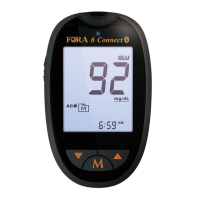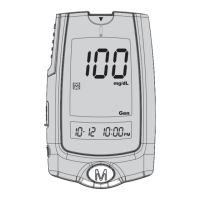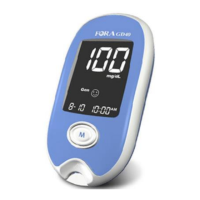What to do if ForaCare Blood Glucose Meter shows E-b/ Err 36?
- JJoshua FreemanJul 28, 2025
If your ForaCare Blood Glucose Meter displays the error message E-b/ Err 36, it means the battery power is too low for the meter to operate. Replace or charge the batteries before conducting the test.





